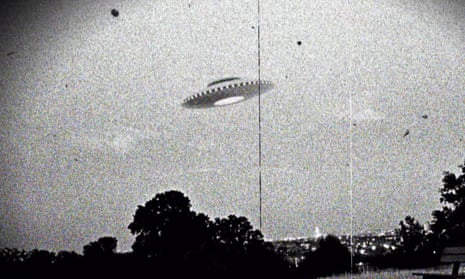The Pentagon has launched an online reporting tool for certain encounters with unidentified anomalous phenomena, formerly known as UFOs, in an expansion of its effort to be more transparent about its exploration of the unknown.
Only current or former federal employees, or those “with direct knowledge of US government programs or activities related to UAP dating back to 1945” are so far eligible to use the secure form, which went live on Tuesday on the website of the defense department’s somewhat blandly named All-domain Anomaly Resolution Office (Aaro).
An option for the public to submit reports is coming soon, officials say. The move signifies that the government is slowly moving closer to fulfilling its promise of complete openness about what it knows, or doesn’t, about everything from strange flashes in the sky to the possibility of alien life and sightings of unusual flying craft.
The launch of the tool follows the appointment last month of former Pentagon liaison Mark McInerney as Nasa’s first director of UAP research, and the space agency’s promise to harness a worldwide army of citizen sky-watchers to improve its observations and analysis of the unfamiliar.
The new form, Aaro says on its website, “is intended as an initial point of contact … it is not intended for conveying potentially sensitive or classified information”.
Secondhand information about UAP or encounters thereof is not welcome, it says. Sean Kirkpatrick, the director of Aaro, told reporters on Tuesday that first-hand knowledge, particularly of government-involved UAP programs, definitely is, and will be treated sensitively and in confidence.
“This reporting mechanism that is on the website is for people who think they have first-hand knowledge of clandestine programs that the government has been hiding,” he said. “[If a] pilot’s flying around, and he sees something in his airspace and he needs to report it, that goes through operational channels.”
Conspiracy theories about the level of government involvement in and knowledge of UFO and UAP research and programs have circulated for decades, from rumors of a secret government facility holding alien spacecraft and lifeforms at Area 51 in the Mojave desert, to the fictionalization of the topic in popular TV programs such as The X-Files.
Kirkpatrick said those clinging to such beliefs are likely to be disappointed.
“I currently have no evidence of any program having ever existed to do any sort of reverse engineering, of any sort of extraterrestrial UAP program,” he said.
after newsletter promotion
“We do have a requirement by law to bring whistleblowers or other interviewees in who think that it does exist, and they may have information that pertains to that.”
Notably, he dangled the prospect of upcoming public dissemination of some information that had previously been kept secret.
“We’ve got a package of a lot of new material that we’ve got ready for release. We’ve uncovered some things that we are having declassified. Not just operational videos, but historical documents,” he said, without giving details.
He described it as “educational material that will help inform the public”.
